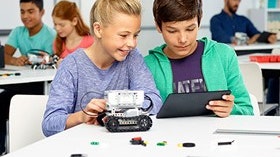Homepage
•
Learning Library
•
Blog
•
Coding in the classroom with real-world learning
Expand breadcrumbs
Expand breadcrumbs
- Learning Library
- Blog
- Coding in the classroom with real-world learning
- Homepage
- •
- Learning Library
- •
- Blog
- •
- Coding in the classroom with real-world learning
Coding in the classroom with real-world learning
By Jenny Nash
June 1, 2017








